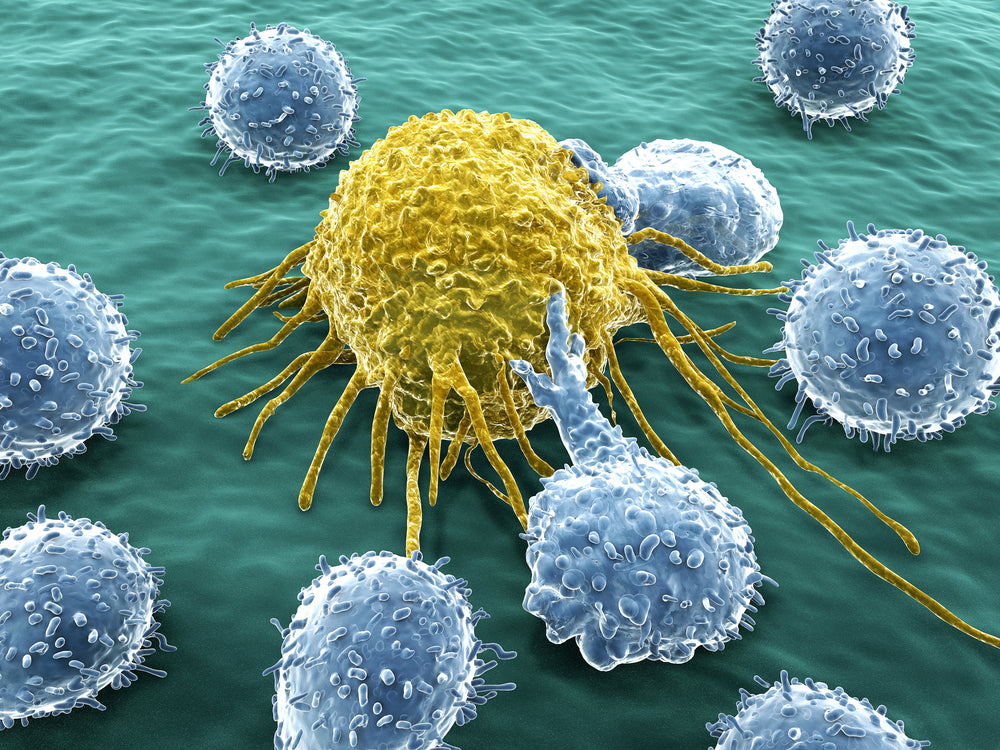The Hallmarks of Cancer
Bulletpoints:
• Cancer development is a complex process and the “hallmarks of cancer” help us understand specific changes in normal cells that must occur for cancer to develop.
• Diet and lifestyle choices can help our bodies prevail against cancer for each hallmark are provided.
The Hallmarks of Cancer
Cancer development is a complex process, and the so-called “hallmarks of cancer” were developed as a useful framework to understand and categorize the kinds of changes that must occur in normal cells for cancer to develop. So, the hallmarks of cancer are not specific symptoms that all patients experience. Rather, the hallmarks describe the biological processes that are exploited or hijacked by cancer to form and grow. 
Hallmark 1: Genomic Instability
Your genome is the full set of DNA instructions contained in every cell of your body. While every cell has the same DNA, cells take on different forms (like blood cells, muscle cells, and so on) when specific genes in our genome are expressed, or “switched on.”
When DNA is changed or damaged through mutations, cells can develop incorrectly and multiply uncontrollably. The more they multiply, the more likely they are to accumulate more damaging mutations. This is what is meant by genomic instability (Nowell 1976).
The average human body consists of 37 trillion cells and there are 2 trillion cell divisions in your body every day. Every time a cell divides, a copy of its DNA is made and passed to its daughter cell.
Even though the mistake rate is amazingly low when making a copy of the genome, the sheer size of the genome (about 3 billion base pairs) means at least 100,000 mistakes every time a cell divides, but luckily our bodies have many different mechanisms to prevent these mistakes from resulting in cancer formation!
Organs with more frequent division such as breast, prostate, and skin are common organs of cancer development as there are more chances for a mutation to occur.
Genomic instability can be a result of inherited or epigenetic (non-inherited, behavior-based) changes in the DNA. There are specific genes that maintain genomic stability, and they either promote cell growth (oncogenes) or suppress unwanted growth (tumor suppressor genes).
These genes, whether turned off or on, can result in transformation of normal cells into cancer cells.
The maintenance of genomic stability is essential for cells to prevent errors from DNA replication. For example, a well-known and studied example of genomic instability resulting in cancer formation are mutations in the BRCA genes.
BRCA1 and BRCA2 are key players in DNA repair pathway and act as tumor suppressors by maintaining genome stability. BRCA mutations are associated with increased risk for breast, ovarian and other cancers.
Curcumin and resveratrol, have been shown to protect against genomic instability of cells.
My husband, who holds a PhD in Biochemistry, and I developed a supplement that addresses each Hallmark. Hallmarks has active ingredients shown in scientific studies to help promote cellular health. Visit www.nutrafocusmd.com or visit our shop through the navigation bar on this site.

